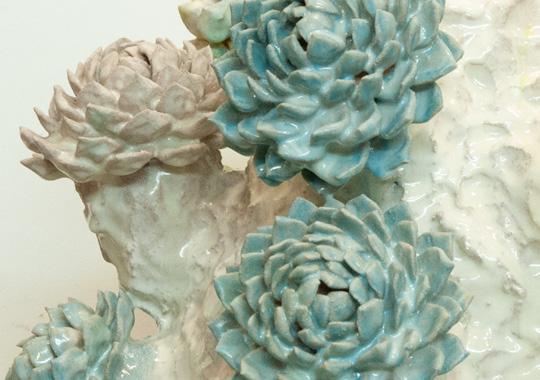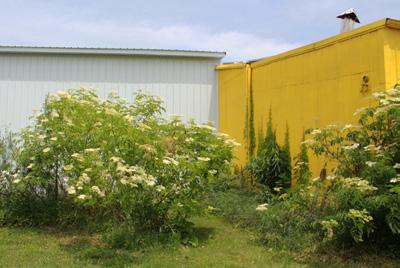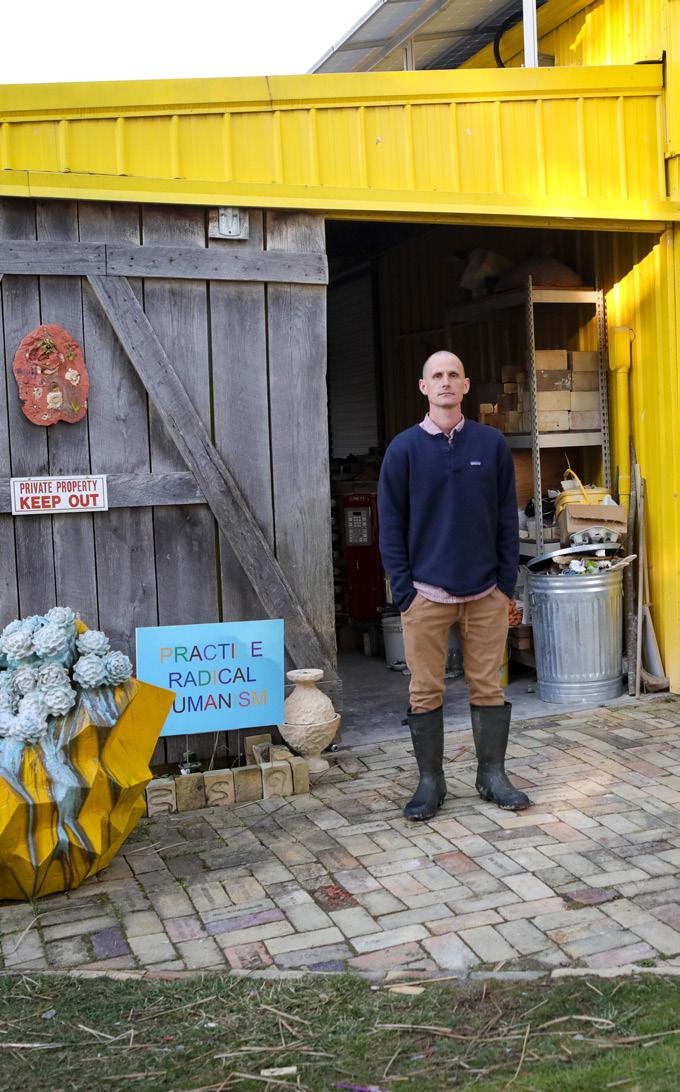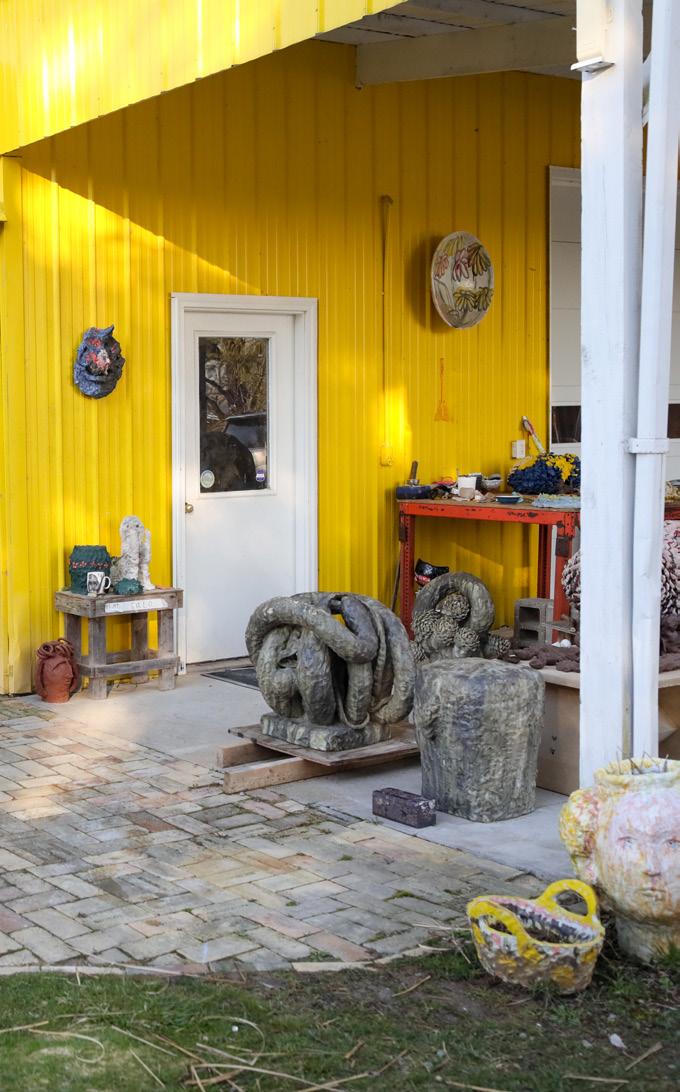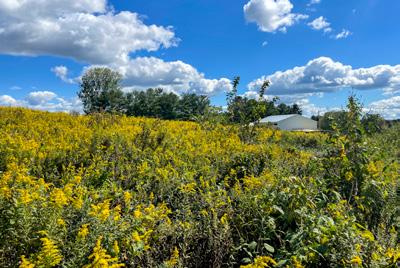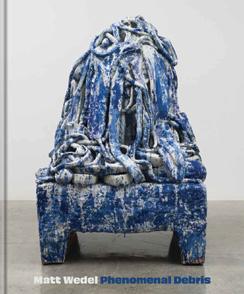MATT WEDEL PHENOMENAL DEBRIS
TOLEDO MUSEUM OF ART NOV. 5, 2022–APR. 2, 2023 LEVIS GALLERY
In a bright yellow studio nestled into nearly 10 acres of softly rolling hills in southeastern Ohio, Matt Wedel (born 1983) builds ideas out of clay.
With astonishing creativity and a self-sustaining supply of energy, he makes imaginative and surprising ceramic forms with dripping smears of color, scores of tiny petals, and massive, coiling limbs. Wedel’s focus shifts between figure and flora, representation and abstraction, monumental and intimate, object and drawing—dualities that have a supportive tension rather than being at odds with each other.
02
01
Arranged in thematic sections, this exhibition explores ideas of color, landscape, and abstraction in Wedel’s work. Each informs the other conceptually, physically, and formally. Wedel’s work demonstrates innovation and mastery with clay, but it is also, and most importantly, the cumulative effect of his life experiences and the engagement with what he describes as the act of being human. For Wedel, everything that goes into the making of the object is the work of art. “The thing that people get mixed up,” Wedel explains, “is that they think that my work is the object. The work that is happening is the act of understanding . . . [and] the object becomes a remnant in allowing that understanding to take place.
03
It is the phenomenal debris that is shed
work—a memory
work taking place.” Matt Wedel: Phenomenal Debris is the artist’s first major museum exhibition. Its display is unconventional. Instead of the typical wall labels identifying individual works of art, a printed guide is provided, along with an audio guide that includes Wedel talking about his work. 1 Large Fruit Landscape Stoneware, 2018 72 × 56 × 49 IN. 04 02
from the
of the


15 Flower Tree (detail) Stoneware, 2022 41 × 48 × 39 IN. 07 ROCK FLOWER TREE 03
Matt Wedel cites his father, a potter, as the foundation of his focus on clay in his artmaking. “Similar to a potter,” Wedel says, “I am in love with the labor of making. It is exploration through form and the constant search for clarity about the world.”
After studying at the School of the Art Institute of Chicago, Wedel expanded his conceptual approach and physical understanding of clay at California State University, Long Beach. His early Rock series developed as a landscape for what would soon dominate his practice: the Flower Trees. Surrounded by the exquisite flora and fauna of the temperate Southern California climate, Wedel found that prehistoriclooking succulents, purple
08
canopies of jacarandas, and lemony yellow citrus began to have a formal influence on his work. He compulsively formed vast numbers of clay petals necessary to fill out the “trees” as they multiplied in number.
As the flower tree concept progressed, the work became larger and more elaborate. This increase in scale combined with the necessary repetition of movement resulted in debilitating hand fatigue. When he eventually returned to the form, a different method of making was required. The petals became softer, more elongated and overlapping. The visual impact appears as abstraction of the form.
09
Rock
Flower Tree
Wedel uses few titles across his body of work, a practice that embodies the progression of a single idea and its evolution.
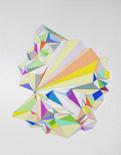

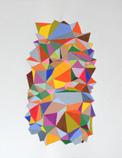

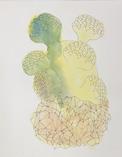
A Flower Tree is not one object but many, each exploring nuances of gesture, color, scale, and, eventually, abstraction.

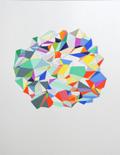
Flower Tree
Gouache and pen on paper, 2009 14 × 11 IN.
Rock
Gouache and pen on paper, 2009 14 × 11 IN.
10
6–8
2–5

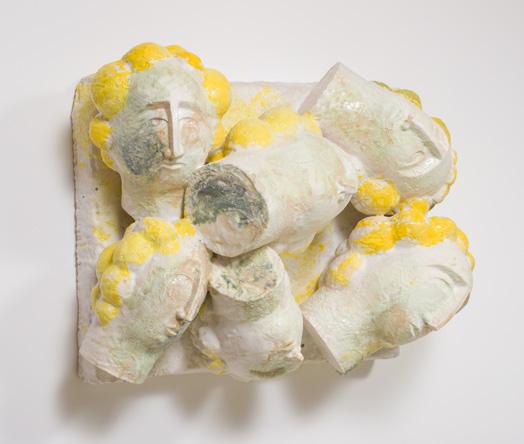
10 9
37 × 37 × 28 IN. Pile
2016 35 × 46 × 21 IN. 11 Rock Flower Tree
Rock Earthenware, 2010
Earthenware,
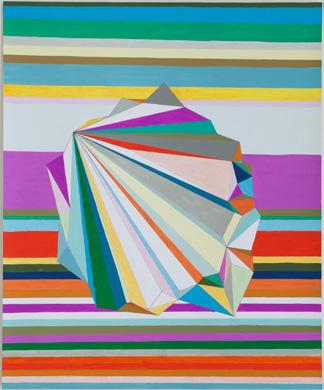
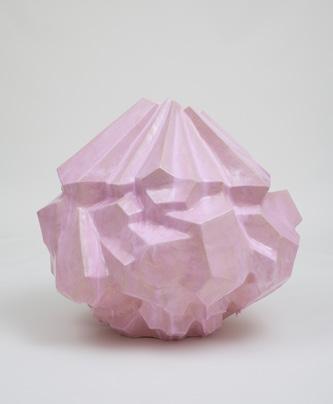
11 Rock Gouache and pen on paper, 2009 14 × 17 IN. 12 Rock Earthenware, 2010 36 × 38 × 37 IN. 12 04
Flower
Flower
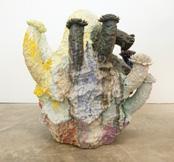

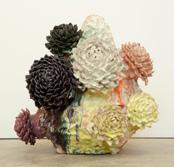
Flower

15 13
Tree Earthenware, 2012 38 × 34 × 35 IN.
16
Tree Stoneware, 2022 18 × 19 × 17 IN.
Rock
14
Flower Tree Stoneware, 2022 41 × 48 × 39 IN.
Flower Tree
13 05
Tree Stoneware, 2022 14 × 19 × 16 IN.


18
Gem Earthenware, 2007 29 × 59 × 50 IN.
17 14
Flower Tree Earthenware, 2011 41 × 27 × 32 IN.
What about these works suggests a landscape?
Where do you imagine such a landscape to be?
What does it sound like?
What does it smell like? What is the weather?
15
Rock Flower Tree
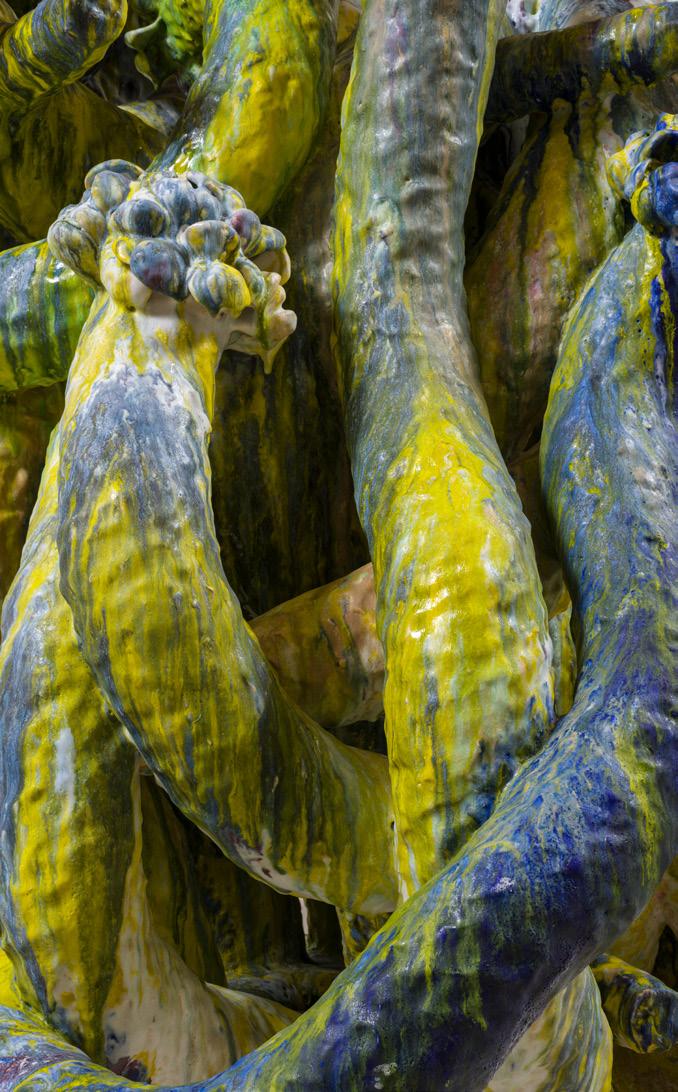
06 Flower Tree (detail) Earthenware, 2015 77 × 74 × 69 IN. 21 17 IN
GARDEN
THE
The notion of Matt Wedel’s studio as garden is a metaphor for this exhibition, tying together plant themes, the impact of his environment on his work, and his interest in cycles of growth and renewal. Excavated directly from the earth, clay materially supports Wedel’s conceptual approach to his sculptural work. The process of healthy regeneration in the natural world is an apt comparison for understanding Wedel’s state of mind and the development of his work. With his home and studio surrounded by fields worked by young farmers engaged in permaculture and sustainable growing practices, Wedel recognizes a compelling alignment between this method of farming and his own focus on finding harmony with the natural
18
world and a global community. For both farmer and artist, these endeavors rely on a commitment to sustainability, while tapping into an inner creativity for problem-solving. External and internal aspects of Wedel’s daily existence intertwine, much like his abstracted flower petals that have grown into entangled masses: “My work is like harvesting from a garden that I planted,” he explains. “It is speaking to animals, holding sand, being splattered with sparks, preparing to die, figuring out why I struggle to make the bed every morning, all of the content between one sentence and the next, typing in the shower while trying not to get my phone wet, drinking fresh water, drifting off to sleep.”
In the Garden
19

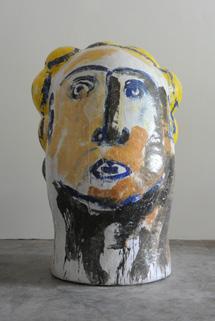

Head Stoneware, 2016 75 × 49 × 46 IN. Flower Tree Earthenware, 2015 77 × 74 × 69 IN. 19 21 Flower Tree Earthenware, 2014 38 3/4 × 60 1/2 × 64 IN. 20 07 20
22
Flower Tree
Earthenware, 2015
13 × 18 × 16 1/2 IN.
23
Flower Tree
Porcelain (whipped), 2018
6 1/2 × 9 1/2 × 11 IN.
the Garden
24
Flower Tree
Earthenware, 2015

17 × 23 × 22 1/2 IN.
25
Flower Tree
Porcelain (whipped), 2018

10 × 11 1/2 × 10 IN.
26 In


Flower Tree
Porcelain (whipped), 2019

10 × 15 1/2 × 12 IN. 21
Flower Tree
Porcelain, 2018 12 × 16 1/2 × 16 1/2 IN.
Flower Tree
Porcelain (whipped), 2018 7 × 8 × 12 IN.
Flower Tree
Porcelain (whipped), 2018 6 1/2 × 10 1/4 × 6 1/2 IN.
Flower Tree
Porcelain, 2013 25 3/4 × 13 × 16 IN.
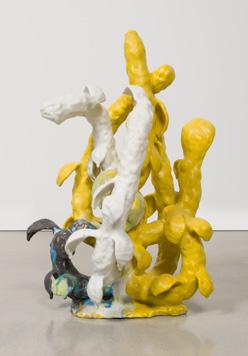
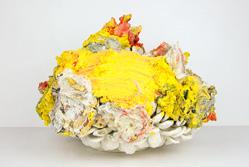

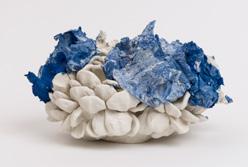
27
28
29
22
30
Flower Tree
Porcelain (whipped), 2018



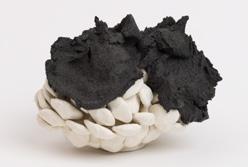
7 × 7 × 8 1/4 IN.
Flower Tree
Porcelain (whipped), 2018 7 × 9 × 11 IN.
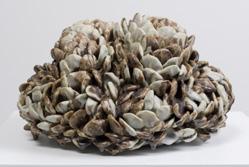
Flower Tree
Earthenware, 2015 17 × 28 × 24 IN.
Flower Tree
Porcelain, 2018 12 × 15 1/2 × 19 IN.
Flower Tree
Porcelain, 2016 8 × 14 × 16 IN.
31
32
33
34
In
23
35
the Garden
Flower Tree
2015

24
36 08
Earthenware,
17 × 28 × 24 IN.
Think of a place that has been inspirational to you. What is it like?
How would you depict it in a work of art?
Use this page to draw or write a description of the place you’re thinking of.
In the Garden
25

Portrait Porcelain, 2018 13 × 8 × 8 1/2 IN. 49 09 27 HEAD SPACE
Like much of Matt Wedel’s imagery, his figural works are an accumulation of various vantage points: an intersection of art history, imagination, representation, and abstraction. The titles Portrait, Head, and Figure are applied variously to two-dimensional stylized drawings and threedimensional sculptures. The heads demonstrate a surprising variety in form as well as clay type: earthenware, stoneware, or porcelain. Wedel extends his interest in color and abstraction of the figure to simple ceramic busts with streaks of pigmented porcelain “painted” across the surface. Swaths of color are found where facial features might be expected.
28
While exploring expression through various forms and mediums (including pastel on paper), Wedel’s figures, heads, and portraits also explore an emotional and psychological space. They invite a conversation about the artist’s state of mind as well as our own. As if acknowledging the importance of individuality, they open a door for us to imagine, ponder, and inquire in the studio alongside Wedel.
The figures, heads, and portraits are representations of consciousness and the contemplation of a range of emotions—including challenging ones like worry, dread, doubt, and fear, which fill this period of shared social anxiety and global
29
Head Space
pandemic stress. This “head space”—yours and that expressed within this exhibition—is for questioning the construct of art history, our capacity for creation and destruction, and the impact culture has on who we become. This internal debate with oneself (in one’s mind/head) is critical to what Wedel refers to as “becoming”: a progression that is built on hard physical and mental work.

Head Stoneware, 2018 44 × 33 × 25 IN. 37 30 10
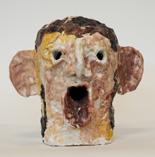
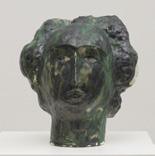

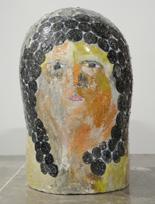


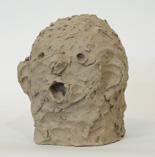
Head Stoneware, 2019 21 × 13 × 15 IN. 38 Portrait Stoneware, 2017 18 × 10 × 12 IN. 40 Portrait Pastel on paper, 2018 17 × 14 1/8 IN. 39 Head Porcelain, 2022 10 1/2 × 10 × 9 1/2 IN. 41 Portrait Stoneware, 2013 15 × 13 1/2 × 13 IN. 42 Portrait Stoneware, 2016 14 × 9 1/2 × 10 1/2 IN. 43 31 Head Space
44
Portrait
45
Head Pot

Pastel on paper, 2018 24 × 19 1/8 IN.

Pastel on paper, 2018 24 × 19 1/8 IN. 32





Portrait Porcelain, 2018 13 × 8 × 7 1/2 IN. 47 Portrait Porcelain, 2018 12 1/4 × 8 × 8 IN. 46 Portrait Porcelain, 2018 11 1/2 × 7 × 7 1/2 IN. 48 Portrait Porcelain, 2018 13 × 8 × 8 1/2 IN. 49 Portrait Porcelain, 2018 11 1/4 × 7 × 7 1/2 IN. 50 33 Head Space

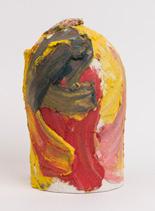

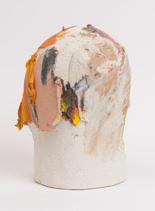

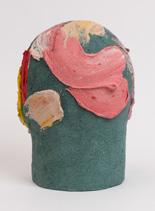
51
52
53 11 Portrait Porcelain, 2018 10 3/4 × 6 1/2 × 8 1/2 IN. 54 Portrait Porcelain, 2018 11
× 7 ×
55
56 34
Portrait Porcelain, 2018 11 × 7 × 8 1/2 IN.
Portrait Porcelain, 2018 13 × 7 × 7 1/2 IN.
Portrait Porcelain, 2018 11 1/2 × 7 × 8 1/2 IN.
1/2
7 1/2 IN.
Portrait Porcelain, 2018 12 × 8 × 9 IN.
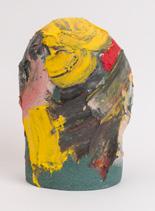



Portrait Porcelain, 2018 12 1/2 × 6 1/2 × 8 IN. Portrait Porcelain, 2018 11 1/2 × 7 × 7 1/2 IN. 57 58 Portrait Pastel on paper, 2018 17 × 14 IN. 59 Dying Figure Pastel on paper, 2017 30 × 22 1/2 IN. 60 Head Space 35
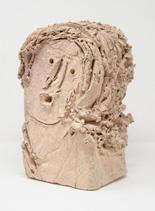
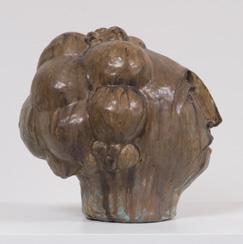


36 Head Stoneware, 2021 10 × 7 × 6 IN. Portrait Stoneware, 2014 12 × 11 × 13 IN. Head Porcelain, 2019 10 1/2 × 7 × 8 1/2 IN. Portrait Pastel on paper, 2017 78 × 51 1/2 IN. 61 64 62 63 12
Portrait

Pastel on paper, 2017 30 × 22 1/2 IN.

Portrait Pastel on paper, 2017 30 × 22 1/2 IN.
Head Stoneware with gold leaf, 2018 9 × 5 1/2 × 6 1/2 IN.

Head Stoneware, 2017 66 × 45 × 48 IN.
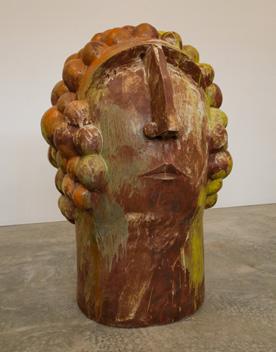
37
Head Space
67 68
65
66


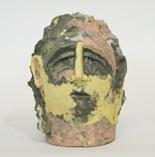


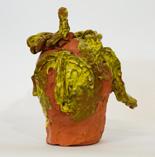
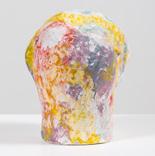

Portrait Stoneware, 2015 13 × 9 × 9 1/2 IN. 74 Head Porcelain, 2019 10 × 7 1/2 × 8 1/2 IN. 73 Head Earthenware, 2020 10 × 9 1/2 × 11 IN. 75 Portrait Pastel on paper, 2017 72 × 51 1/2 IN. 76 Head Stoneware, 2020 12 × 12 × 12 IN. 72 Portrait Stoneware, 2015 14 × 10 1/2 × 10 IN. 71 Portrait Terracotta, 2016 15 × 11 × 10 1/2 IN. 70 Head Earthenware, 2015 11 1/2 × 9 × 10 1/2 IN. 69 38
If the works in this section represent the artist starting a conversation with you, what would you say back to the artist?
Use this page to write or draw your thoughts.
Head Space 39
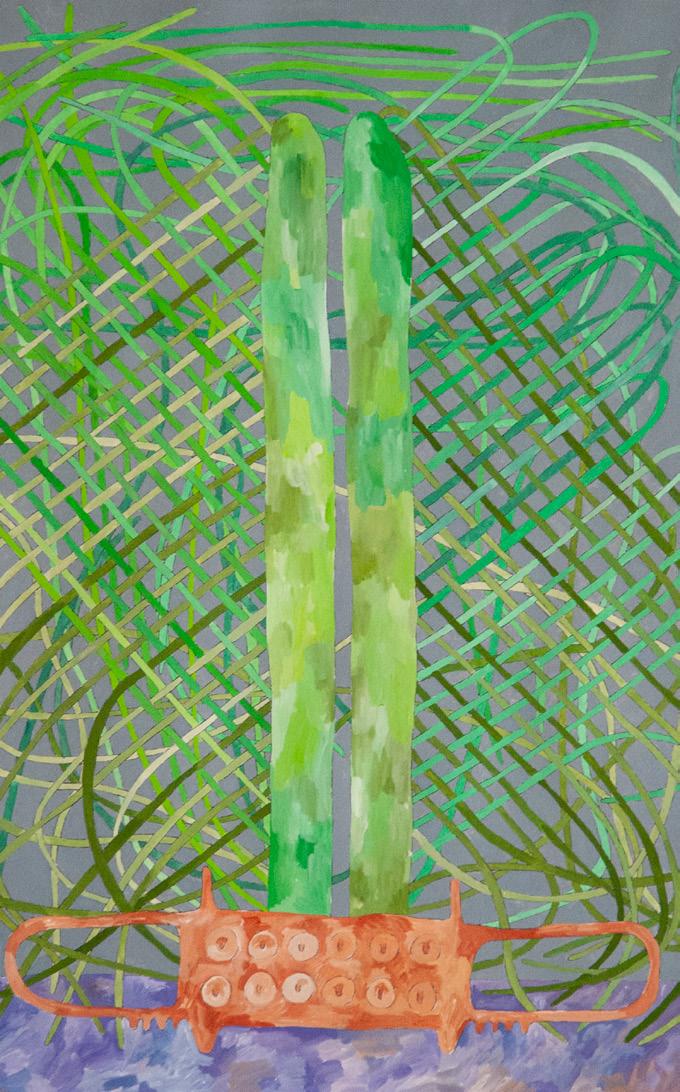
Potted Plant (detail) Gouache on paper, 2021 17 × 14 IN. 126 41 EVERY
OF CURIOSITY 13
POINT
“My work is what happens at every point of curiosity, in the learning of history, when I stare into the dark before I fall asleep, in the teaching of my children, in my fear about our failure to evolve fast enough, when something I have made has been destroyed, after a question is answered, when I hold someone’s hand, when I set time aside for another, when I sit in hot water, when I can allow myself to be.”
For Wedel, the pursuit of curiosity is a method of navigation inherent to life and artmaking. His use of color is a key aspect of this pursuit. In ceramics, color is a physical material, expressed by Wedel in multiple ways, including with glaze on the surface and even
42
mixed within the porcelain clay itself. Glaze, a glass-like substance, reacts to heat. In the kiln it moves and mixes unpredictably, responding to gravity and form, as seen in the Fruit Landscapes. In his series of small Flower Trees, Wedel paints with globs of pigmented porcelain. The color sits on top of clusters of petals like whipped meringue on a slice of pie. With this method Wedel is managing the effect rather than allowing the kiln to take control, using color as action, as gesture.
Wedel uses gouache (opaque watercolor) drawings as another means of exploring color. His images of potted plants reference both his mother, who is a gardener, and his father’s
43
Every Point of Curiosity
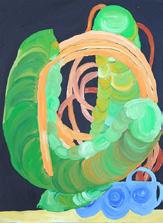


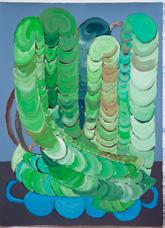
44
77–92 Potted Plant Gouache on paper, 2018 30 × 22 1/2 IN. 14
pottery. It is fitting that the word “gouache” derives from the Italian term guazzo, or mud, further emphasizing connection to the earth, the source of clay.
Every Point of Curiosity
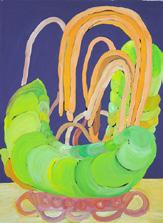

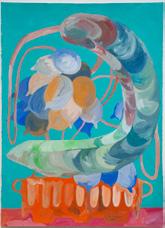






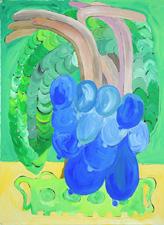
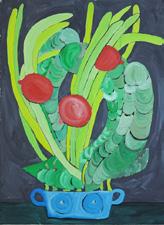
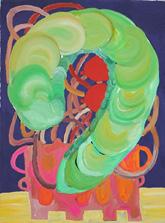
45
Potted Plant
Gouache on paper, 2018
84 1/2 × 28 1/4 IN.
94 96
Potted Plant Gouache on paper, 2018 42 1/4 × 28 1/2 IN.
Potted Plant Gouache on paper, 2018 42 1/4 × 30 1/2 IN.

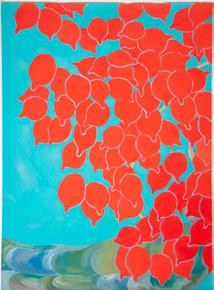
Potted Plant Gouache on paper, 2021 45 1/2 × 33 1/2 IN.

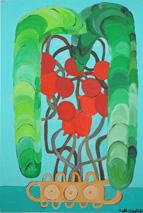
Potted Plant Gouache on paper, 2021 44 1/2 × 33 1/2 IN.

46
93 95 97
Fruit Landscape Porcelain, 2016 9 × 16 × 14 IN.
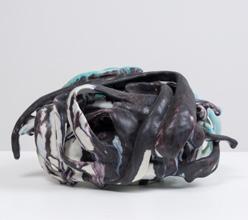
Fruit Landscape Porcelain, 2016 5 1/2 × 11 1/2 × 9 1/2 IN.

Flower Tree Earthenware, 2015 43 1/2 × 47 × 44 IN.
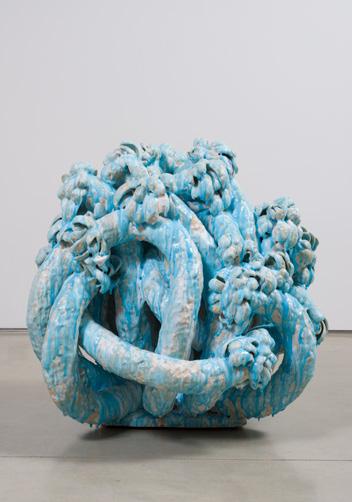
47
98 100
Every
99
Point of Curiosity


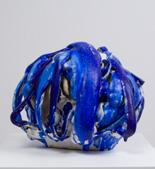

48 Fruit Landscape Earthenware, 2016 9 × 8 1/2 × 11 1/2 IN. 101 Fruit Landscape Earthenware, 2016 8 × 9 × 7 IN. 102 Fruit Landscape Earthenware, 2016 12 × 15 × 12 IN. 103 Bather Glazed terracotta, 2020 38 × 22 × 24 IN. 104 15

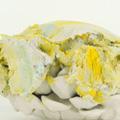
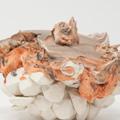
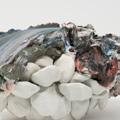


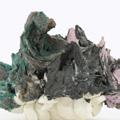



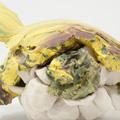


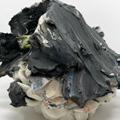
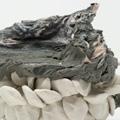

49 Flower Tree (detail) Porcelain, 2018–2019 VARIOUS SIZES 105–120 Every Point of Curiosity

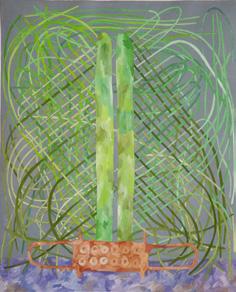

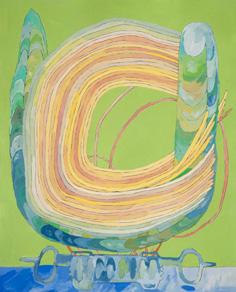
50
Gouache
14
11
121
Gouache
17 × 14
125
Gouache
14
11
122
Gouache
17 × 14
126
Potted Plant
on paper, 2021
×
IN.
Potted Plant
on paper, 2021
IN.
Potted Plant
on paper, 2021
×
IN.
Potted Plant
on paper, 2021
IN.

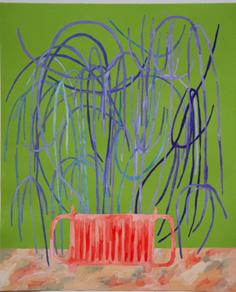


51
Gouache
14
11
123
Gouache
17 × 14
127
Potted Plant
on paper, 2021
×
IN.
Potted Plant
on paper, 2021
IN.
Gouache
14
11
124
Gouache
2021 17 × 14
128 Every Point of Curiosity
Potted Plant
on paper, 2021
×
IN.
Potted Plant
on paper,
IN.
129
Potted Plant
Gouache on paper, 2021 30 × 22 1/2 IN.
130
Potted Plant
Gouache on paper, 2021 30 × 22 1/2 IN.

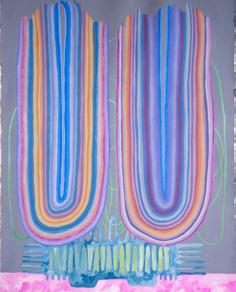
131
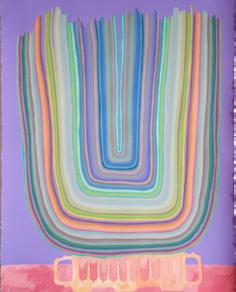
Potted Plant Gouache on paper, 2021 30 × 22 1/2 IN.
Potted Plant Gouache on paper, 2021 30 × 22 1/2 IN.
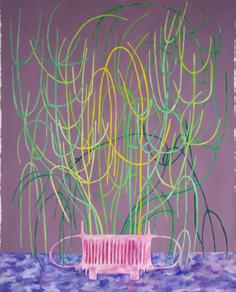
52
132
Think about your own life, your daily routine, the people you meet, and the places you visit.
What are these experiences like? How would you depict your own understanding of these human experiences in a work of art?
Use this page to imagine what your life experiences look like as a work of art, or perhaps as a poem.
53
Every Point of Curiosity

16 Lemon Tree (detail) Earthenware, 2018 63 1/2 × 41 × 18 1/2 IN. 133 55 MOURNING & MORNING
As it was for many, Wedel’s life and creative work was impacted severely by the global COVID-19 pandemic. His Mourning Benches, the most recent works in the exhibition, are about the need to pause. Glazed in a somber, monochromatic palette, the benches provide a place for rest, reflection, and healing. Low to the ground, they offer an easy respite. Unlike with most works in museum exhibitions, you are invited to touch, to sit. The benches offer a shared space, each with its own psychological topography—arches, mounds, and heads. Open-mouthed, the faces at the end of each bench read as surprised and shocked, mirroring our experiences of the pandemic, racial reckoning, and magnified political and cultural
56
divides. They evoke expressions of sorrow for what happens and what does not happen during times of extreme communal distress.
Wedel’s Lemon Tree serves as a counterpoint to the Mourning Benches. With its healthy, ripe fruit, the tree is life affirming and a representation of the constant ability we have for transformation and rejuvenation. It represents a new morning after mourning—the bright yellow fruit emulating the lemon-yellow studio where Wedel works, starting over each day as he makes his ideas in clay.
We invite you to sit on the Mourning Benches.
57
Mourning & Morning


58 17 18 Lemon Tree Earthenware, 2018 63 1/2 × 41 × 18 1/2 IN. Mourning Bench Stoneware, 2022 49 × 193 × 30 IN. 40 × 141 × 28 IN. 133 134–135
Can art connect people, even in a time of much division? Sit on a bench; take a moment to pause and think about what experiences connect us with others. Breathe and rest.
59
Mourning & Morning
60 Be sure to see the sculpture by Wedel in TMA’s Sculpture Garden and the one in the Glass Pavilion.
Glass Pavilion You Are Here EASTMONROE ST.WEST Pyre

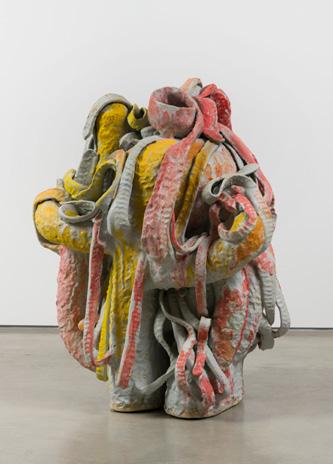
61 Fruit Landscape Stoneware, 2017 52 × 42 × 37 IN. Pyre Earthenware, 2017 75 × 65 × 65 IN. Glass Pavilion, Gallery 2 Sculpture Garden
Ceramics is the term used for objects made from clay after they have been fired in a kiln. Matt Wedel works with three basic types of clay, called clay bodies, to make his ceramic sculptures. Each has specific characteristics.















































































































































